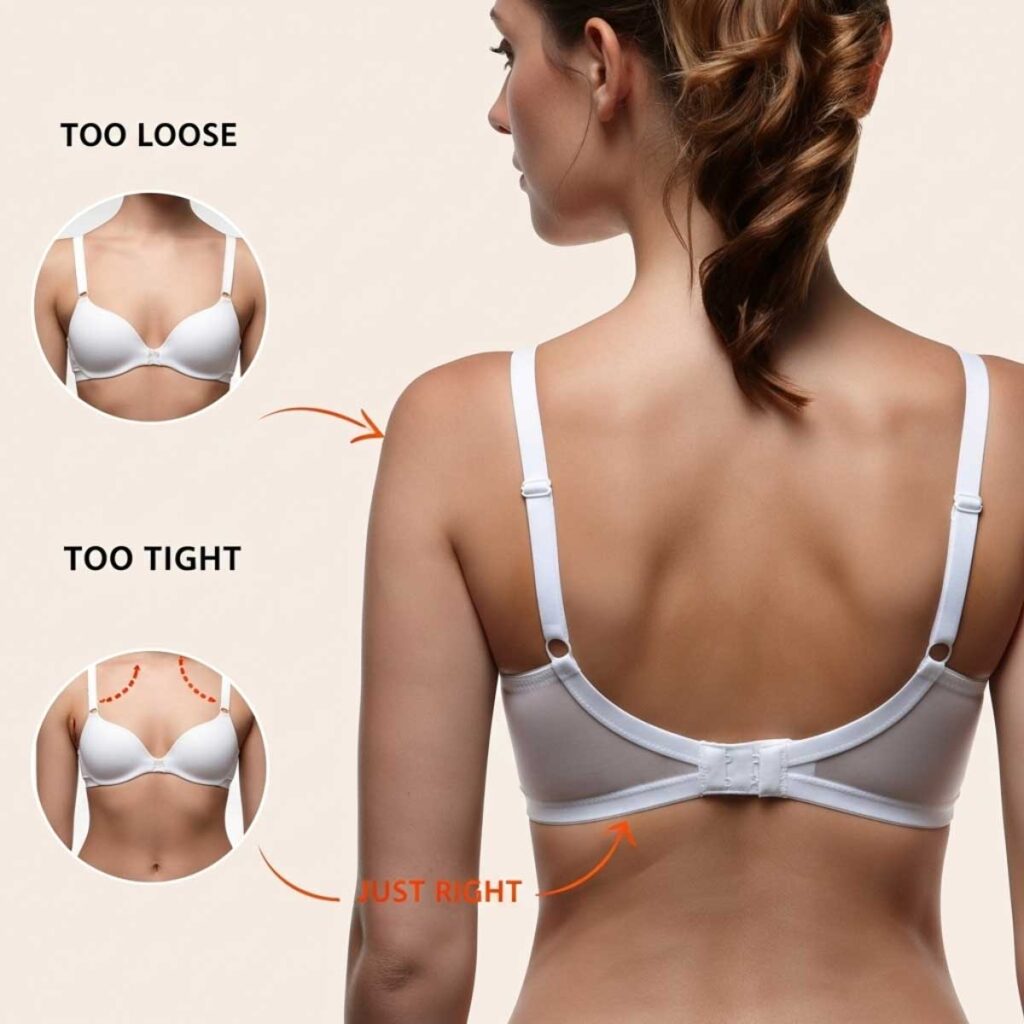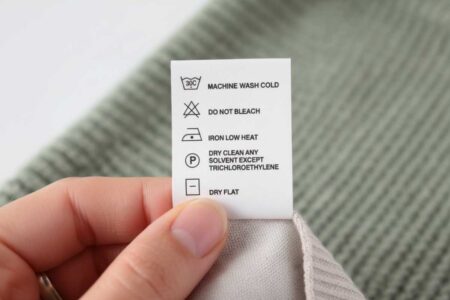Lingerie Fit Troubleshooter
Solve your bra fit problems with personalized solutions. Get sister size recommendations, adjustment tips, and specific fixes for common fit issues like gaping, slipping, and underwire problems.
How to Check Your Bra Fit
- Band test: Run your finger under the band - should fit snugly but not tight
- Bounce test: Jump up and down - band should stay in place
- Lift test: Raise your arms - band shouldn't ride up significantly
- Cup check: No spillage over top, no gaps or wrinkling
- Center gore: Should lay flat against your sternum
- Underwire position: Should follow your breast root, not sit on breast tissue
- Strap comfort: Should carry 10% of support, not dig into shoulders
I made this Lingerie Fit Troubleshooter to end the guesswork. Tick the symptoms you see, like cups gaping or straps sliding, and it gives you a simple plan with smart sister sizes. Most people get a better fit after the first tweak.
What this tool does, and why I built it
I try a lot of bras, across sizes, styles, and shapes. The pattern is always the same. More than one thing goes wrong at once, and standard charts do not tell you what to try first. This tool reads your symptoms together, not in isolation. It ranks the first move, shows sister sizes that make sense, and nudges you toward styles that suit your breast shape. It is clean, fast, and friendly on mobile, so you can use it in a fitting room without stress.
Table of Contents
How to use it in 60 seconds
- Type your current size, for example 34C or 36DD.
- Tick every symptom you see, not just one. Complex fits are normal.
- Open your plan, start with the High priority fix, then try the sister size chips.
Want a quick cross check first Try the International Size Converter in our Tools Hub.
Bra Fit Problems and How to Fix Them

I will show the first three in full, then keep the rest compact so you can move quickly.
Cup gaping or wrinkling
Why this happens: The cup has more space than your breast needs, or the cup shape is a mismatch. A loose band can make it worse.
Start here: Go one cup smaller. If the shape looks off, try a balconette or plunge.
Sister moves: 34C to 34B. If the band is loose, 34C to 32D.
Little check, scoop and lift, then look again. If the wrinkle vanishes, you were not fully seated in the cup.
Spillage or quad boob
Why this happens: The cup is too small, or the band is letting the cups sit low.
Start here: Go up one cup, consider a full cup or a higher balconette.
Sister moves: 34C to 34D. If the band rides up, 34C to 32D.
Band riding up
Why this happens: The band is too large, and tight straps are trying to do the job.
Start here: Down one band, up one cup to keep volume, then loosen the straps.
Sister moves: 34C to 32D.
Quick test, lift your arms. If the band climbs, it is time to go tighter.
Straps slipping
What I look for first: Loose straps, roomy cups, wide set straps on sloped shoulders.
Start here: Tighten straps a touch, then try a racerback or convertible. If cups are roomy, down one cup.
Underwire poking
Why this happens: Cup is too small, or the wire shape does not match your root. Sometimes the frame is tired.
Start here: Up one cup for a wider wire footprint, or try a wider wire shape like a balconette.
Sister moves: 34C to 34D. If the band also bites, 34C to 36B.
Heads up, if wires always poke, a well built wireless T shirt bra is a smart move, not a downgrade.
Center gore not flat
Why this happens: Cups are small, breasts are very close set, or the gore is too tall.
Start here: Up one cup, or choose a plunge with a lower center.
Back bulge
Why this happens: The band is tight, the elastic is low quality, or the cups are small.
Start here: Up one band, down one cup to keep volume, or try a smooth T shirt style.
Shoulder strap dents
Why this happens: The band is not doing the work, the straps are.
Start here: Down one band so the band supports, then loosen the straps.
Wrinkling at the bottom of the cup
Why this happens: Shape mismatch or extra volume, the wire may not sit in the crease.
Start here: Switch to a balconette or plunge, or down one cup if there is clear extra space.
Breasts sliding out the bottom
Why this happens: Band too large, cup too small, wire not anchored in the fold.
Start here: Down one band, up one cup, then place the wire into the crease before fastening.
Sister sizes that actually help
Sister sizes keep your cup volume close while you change band tension. The tool does the math for you, here are quick examples I use when shopping.
- 34C sisters: 32D and 36B
- 36DD sisters: 34DDD, often labeled 34F, and 38D
- 32B sisters: 30C and 34A
About letters: Some US brands write DD as E and DDD as F. UK brands often add FF and GG. The tool focuses on practical moves, like 34C to 32D, so you can grab what is on the rack without decoding every alphabet.
Breast shape and styles that play nice
- Close set: Plunge or any low center that can sit between the breasts.
- Wide set or teardrop: Balconette lifts and centers without cutting in.
- Round: T shirt, balconette, or full cup usually sit smooth.
- East west: Plunge or push up brings tissue forward.
- Athletic: Sports or T shirt, a minimizer can help with width.
- Asymmetrical: Removable cookies or flexible T shirt cups balance things out.
My seven point fit check
- Band test: One finger under the band, snug, not painful.
- Bounce test: Light jumps, the band stays put.
- Lift test: Arms up, the band should not climb much.
- Cup check: No spill and no gaps.
- Center gore: Flat on styles that are meant to tack.
- Wire line: Trace your breast root, not your tissue.
- Straps: About ten percent of support comes from straps.
Care that protects your fit
- Rotate three to four bras so elastic can recover.
- Hand wash or use a lingerie bag, close the hooks first.
- Skip the dryer, heat breaks elastic.
- Replace workhorse bras every six to twelve months, based on wear.
FAQ
Can I select several problems at once?
Yes. Pick everything you notice. The tool ranks fixes across all your symptoms.
What if I sit between sizes?
Start with the top High priority fix, then try the first sister size. Small moves solve most fits.
Should I choose wireless or underwire?
If wires poke even in the right size and shape, try a good wireless T shirt bra or a flexible wire frame. Comfort wins.
Try the Troubleshooter
- Primary: Use the Lingerie Fit Troubleshooter
- Secondary: Check the International Size Converter
If you like a second opinion, take the results to a fitting room. The sister size chips turn try ons into a short list.





